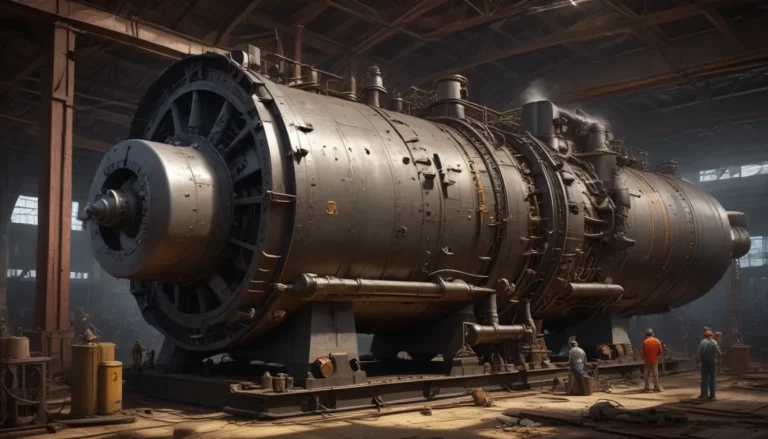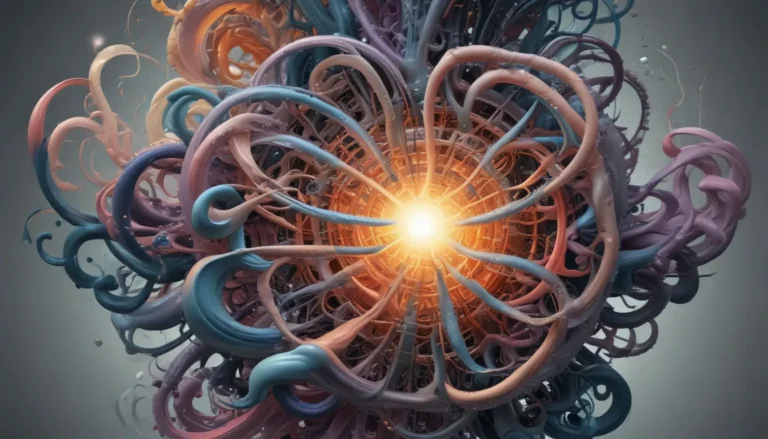A Note About Images: The images used in our articles are for illustration purposes only and may not exactly match the content. They are meant to engage readers, but the text should be relied upon for accurate information.
Have you ever wondered how real gases behave in the world of chemistry? Look no further than the Van der Waals equation, a groundbreaking concept developed by Johannes Diderik van der Waals, a visionary Dutch physicist. This equation provides a more accurate depiction of gas properties compared to the traditional ideal gas law, taking into account factors like the volume of gas particles and their intermolecular forces. Join us as we explore the extraordinary world of the Van der Waals equation and unravel some fascinating facts about this scientific marvel.
Understanding the Van Der Waals Equation
The Van der Waals equation, introduced by Johannes Diderik van der Waals in 1873, revolutionized the way we understand the behavior of real gases. Unlike the ideal gas law, which assumes idealized gas particles with zero volume and no interactions, the Van der Waals equation considers the finite size of gas particles and the attractive or repulsive forces between them.
Key Takeaways:
- The Van der Waals equation is a specialized formula that helps scientists comprehend the behavior of real gases, taking into account factors like particle size and intermolecular attractions.
- Johannes Diderik van der Waals, the genius behind the equation, was awarded a Nobel Prize for his groundbreaking work, which continues to shape the fields of chemistry and engineering.
Delving Deeper into the Van Der Waals Equation
Let’s explore some key aspects of the Van der Waals equation and its implications in the realm of chemistry and thermodynamics.
- Provides an Improved Model for Real Gases: The Van der Waals equation corrects for the volume occupied by gas particles, offering a more accurate representation of real gas behavior.
- Accounts for Intermolecular Forces: Unlike the ideal gas law, the Van der Waals equation incorporates the attractive forces between gas molecules, enhancing its predictive capabilities.
- Predicts High-Pressure Behavior: One of the remarkable features of the Van der Waals equation is its ability to accurately forecast the behavior of gases under high pressures, where intermolecular forces play a significant role.
Unveiling the Significance of the Van Der Waals Equation
Let’s shed light on the profound impact of the Van der Waals equation on modern chemistry and its applications in various fields.
- Nobel Prize-Winning Equation: Johannes Diderik van der Waals received the prestigious Nobel Prize in Physics in 1910 for his revolutionary research on the equation of state for gases and liquids.
- Estimates Critical Properties: The Van der Waals equation enables scientists and engineers to estimate critical temperature, pressure, and volume for different substances, facilitating in-depth studies and predictions.
- Limitations and Applications: While the equation may lose accuracy at very high temperatures, it remains a cornerstone in chemical engineering and thermodynamics, offering valuable insights into non-ideal gas behavior.
Diving into the Fascinating World of the Van Der Waals Equation
As we unravel the mysteries of the Van der Waals equation, let’s explore some intriguing facts that showcase its versatility and importance in the scientific community.
- Molecular Attraction Parameter: The Van der Waals equation introduces the ‘a’ term, representing the molecular attraction parameter that accounts for the strength of intermolecular forces in a specific gas.
- Derivation and Equilibrium: Derived from a modified ideal gas law, the Van der Waals equation serves as an equilibrium condition for gases, providing a comprehensive representation of their behavior.
- Critical Behavior: At temperatures and pressures near the critical point, the Van der Waals equation exhibits critical behavior, illustrating unique properties of gas-liquid equilibrium.
Conclusion: Embracing the Wonders of the Van Der Waals Equation
In conclusion, the Van der Waals equation stands as a remarkable tool that shapes our understanding of real gas behavior in the world of chemistry. With its ability to capture the nuances of intermolecular forces and particle volume, this equation serves as a cornerstone in predicting phase transitions, determining critical points, and exploring the complexities of non-ideal gases. As we continue to delve into the fascinating realms of chemistry and thermodynamics, the Van der Waals equation remains a beacon of knowledge and innovation.
FAQs: Unveiling the Mysteries of the Van Der Waals Equation
- What is the Van der Waals equation? The Van der Waals equation is an equation of state that offers a comprehensive model for describing the behavior of real gases, incorporating corrections for intermolecular attractions and the finite volume of gas particles.
- Who proposed the Van der Waals equation? The Van der Waals equation was formulated by the brilliant Dutch scientist Johannes Diderik van der Waals in 1873.
- What are the variables in the Van der Waals equation? The Van der Waals equation includes variables such as pressure, volume, temperature, and constants representing intermolecular forces and particle size.
Discover More with Van Der Waals Equation
Join us on a journey of discovery as we explore the wonders of the Van der Waals equation and unravel the secrets of real gas behavior. Embrace the spirit of curiosity and innovation as we delve into the intricate world of chemistry and thermodynamics, guided by the visionary insights of Johannes Diderik van der Waals. Let’s embark on a quest for knowledge and enlightenment, powered by the remarkable tool that is the Van der Waals equation.






